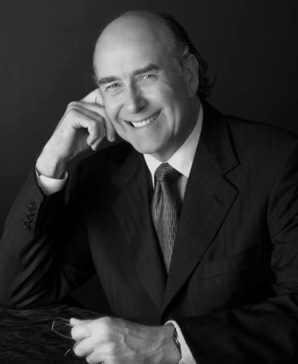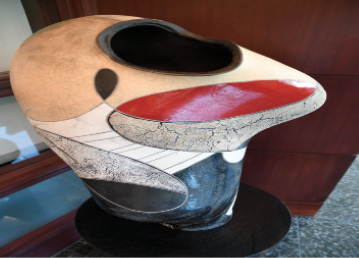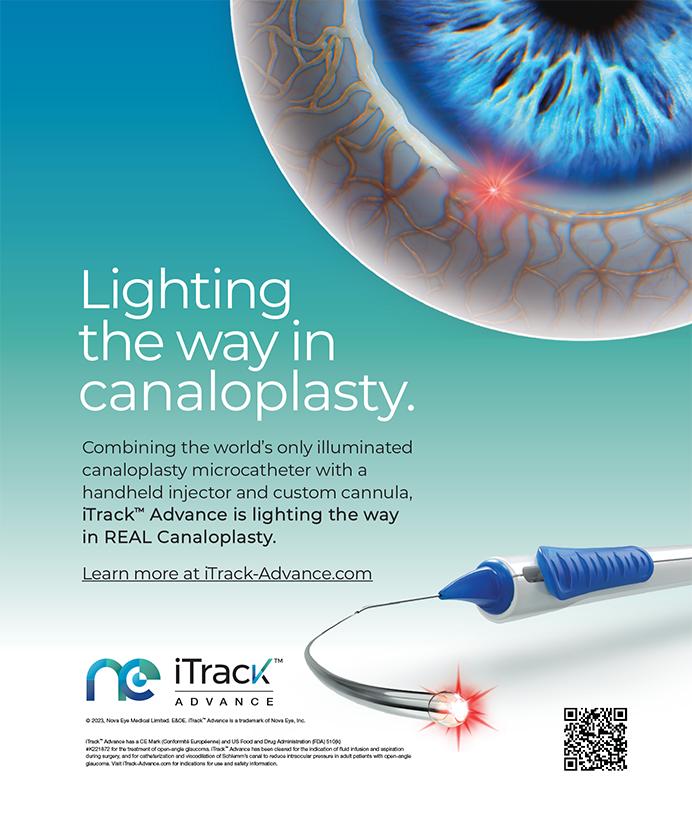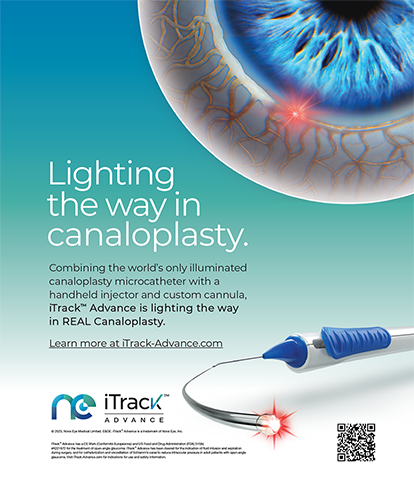The essence of the Waring Vision Institute (WVI; www.waringvision.com) is concierge-level care and cutting-edge vision correction steeped in a rich brew of corneal refractive royalty. Fresh out of a successful academic career, WVI Medical Director George O. Waring IV, MD, founded the practice that he and his late father, George O. Waring, III, MD, had dreamed of forging as a team. The elder Waring was, of course, the iconic figure who helped create and shape the refractive surgery specialty (see Remembering a Pioneer below), which gave his son a front-row seat to the evolution of refractive surgery and augmented his education and training.
Remembering a Pioneer
Featuring the Waring Vision Institute without citing the contributions of the late George O. Waring III, MD, to the field of refractive surgery and his influence on a generation of corneal refractive surgeons would be more than neglectful; it would be blind.
His name is synonymous with the birth and growth of refractive surgery in the United States, as reflected by just a few of his contributions and awards:
- Dr. Waring chaired the Prospective Evaluation of Radial Keratotomy (PERK) study. It was the first prospective, well-run clinical study of radial keratotomy, and it set the standard for future research in refractive surgery.
- He presented to the FDA the data that led to the first approval of clinical excimer laser vision correction surgery in the United States.
- As the principal investigator of the Emory-sponsored investigations of LASIK, he received the first physician-sponsored Investigational Device Exemption for excimer laser refractive surgery from the FDA.
- He served on more than 20 editorial boards.
- He published more than 270 original peer-reviewed articles and 70 book chapters.
- His authoritative 1,300-page textbooks Refractive Keratotomy for Myopia and Astigmatism and Corneal Disorders: Clinical Diagnosis and Management (with Howard Leibowitz, MD) are classics in the field of corneal refractive surgery.
Dr. Waring’s contributions, however, go beyond these accomplishments. In one final magnanimous gesture, this iconic surgeon, who spent his professional career improving the vision of others, donated his corneas for transplantation.

“I remember being there when they came to harvest,” his son, George O. Waring IV, MD, said, “and I just thought to myself, ‘The recipients of this gift will have no idea that it was from one of the fathers of cornea surgery and that they’re looking through my father’s eyes.’”
Everyone who came in contact with the elder Dr. Waring, including this reporter, has a gem of a story about an adventure he took them on, a bear hug he bestowed, or a lesson he imparted. Years ago, I cowered in his larger-than-life presence as he bellowed my name across a crowded lecture hall to signal that it was my turn for a 10-minute interview with him. During that brief encounter, I learned more about the intricacies of the visual system than I could have gotten from any textbook, and although that lesson was helpful for the article I was writing, it is not what defines him in my memory. What I will never forget about Dr. Waring is the beautiful way he said my name. Whereas others routinely mangled my multisyllabic moniker, he made it sound like the opening notes of an operetta.
Unforgettable and influential—there are not enough words to describe his influence on corneal refractive surgery, his impact on the more than 60 fellows he trained, and, most important, how his vision lives on in the son who brought his father’s dream to life.
– Rochelle Nataloni, Senior Writer
The younger surgeon has made his own mark on the specialty by earning a host of honors, including the International Society of Refractive Surgery’s 2014 Lans Distinguished Award for making innovative contributions to the field of refractive surgery. The father and son’s plan of transitioning out of academia together and into a private practice was derailed by fate. Instead, the younger surgeon has created a vision correction facility that pays homage to his refractive surgery lineage and sets the stage for an enterprise built on forward-thinking principles, techniques, and technology.
A GREAT START
Having opened its doors early in summer 2017, the WVI is a relatively young venture, but it is off to an excellent start.
“We were fortunate that a majority of our patients wanted to continue seeing me once I started this practice,” said Dr. Waring. “It’s been a real blessing, and it’s led to a large part of our early success.”
So far, the practice is going full steam ahead, propelled solely by word-of-mouth referrals. “We have far and away outpaced ourselves in terms of what we had planned for the initial phase of operation,” he remarked. “We have been much busier than we anticipated, and we have just initiated our marketing in line with our practice philosophies.”
Dr. Waring has delineated a set of principles to guide the WVI, and his staff of seven plays a crucial role in the plan. The strategy includes a holistic approach to the provision of vision correction, well-trained staff members who are empowered to make decisions without being micromanaged, concierge-level client care, an environment that celebrates the gift of optimized vision, and the tools and talent to achieve the best outcomes (see Better Than Perfect below).
Better Than Perfect
In addition to leading the Waring Vision Institute, George O. Waring IV, MD, serves as an adjunct assistant professor of bioengineering at the College of Engineering and Science at Clemson University in Clemson, South Carolina. Dr. Waring is also a founding member of the American College of Ophthalmic Surgeons, the prestigious Vanguard Ophthalmology Society, and the Cornea, External Disease and Refractive Surgery Society. His practice is an active participant in numerous scientific advisory boards and aids the development of IOLs and other ophthalmic devices. Although his quest to reach for better outcomes is probably written in his DNA, it plays out in a practical sense every day, as hopeful patients entrust their vision to his hands.
“Working with innovation and research and development, in upstream product concepts and design, has been a large part of our professional motivation, but, because we’ve had access to the newest technologies early on, it’s helped us push the limit of how well we can help patients see,” Dr. Waring commented. A good example, he said, is that a Snellen visual acuity of 20/20 is no longer an adequate endpoint.
Advanced Ocular Analysis at the Waring Vision Institute
“Now, our interest is in the physical light that is falling on the patient’s retina and making that light be the most purely focused form with the least amount of scatter possible,” he said. “As a result, we’re able to push the limits into what we consider hyperacuity, so we are now able to deliver 20/10, which, of course, is 1 to 2 lines better than perfect vision by Snellen standards.”
Dr. Waring continued, “Our goals are lofty because we know that, if we do it right—and we have the objective measurements to do this now—we think we can push the limits on a regular basis toward hyperacuity, and that leads to increased patient satisfaction and to word-of-mouth referrals.”
“Ultimately, what we’re trying to do is provide uncompromised excellence in vision correction and create a practice culture that reverberates through the community and engenders loyalty and ultimately creates a legacy of loyalty,” he said.
CONCIERGE CARE
Among the ways that Dr. Waring builds this practice culture is by offering patients an exceptional health care experience.
“This experience starts before our client comes in,” he explained. “The staff is meticulously trained in trying to create an experience around the visit that is second to none in medicine. We’re focused on having clients coming in and having a journey they will never forget. We want them walking out and saying they had not just the best eye exam ever, but also that they had the best medical experience ever.”
WVI seeks to eliminate the clinical feeling typically associated with physician consultations and medical procedures, or, as Dr. Waring likes to say, “We take the medicine out of medicine.” The goal is to provide an experience more along the lines of what one might experience in one of the St. Regis Hotels.
“Ultimately, our mission is to provide a world-class client experience where we foster a culture of mutual respect between our team and our clients,” said Dr. Waring. “While we are a full-service eye care practice dedicated to caring for our clients’ visual needs throughout their life, we are primarily a vision correction center for major vision correction and laser cataract surgery.”
A key component is minimizing or eliminating wait times, which shows that the staff recognizes and appreciates that the client’s time is valuable. “Our goal is zero wait time,” Dr. Waring commented. “Basically, we’re trying to prioritize clients’ time because we want them to understand how valuable we believe their time is.”
Being a paperless practice and using a cloud-based electronic health records (EHR) and practice management software system to help achieve that aim. Clients can complete a majority of their paperwork at home through a patient portal, and iPads (Apple) in the reception area enable them to check in quickly and scan documents such as identification and insurance cards. “It self-populates the medical record, so it literally takes just moments for them to check in,” Dr. Waring explained.
The front office staff is trained to anticipate each guest’s arrival and greet him or her by name. “They never randomly call out into the waiting room,” he noted. “They personally go up and greet each guest by name.” Exchanges are carefully scripted, he added, “because everyone is acting as an extension of the Institute, so it’s important that we’re all speaking the same language.” Even before clients come to the WVI, they have contact with staff via telephone, and they often interact after the visit as well. Whether in person or via phone, each encounter is scripted so that the second-to-none experience and messaging remain consistent.
Once guests are greeted in the reception area, they are escorted to the Advanced Ocular Analysis Center (eyetu.be/lwket), where all digital testing is performed. Clients are assigned an intake track based on the standard operating procedure for whatever reason they are being seen; it may be an evaluation for LASIK, a refractive lens exchange, or cataract surgery.
“Next, they are brought back into our exam lane, and everything is timed so that we all stay on task,” Dr. Waring said. “I see them as soon as they’re ready, and then, instead of showing them a generic video or animation of the eye to explain their situation, I take them on a digital tour of their eye made possible by our EHR software. There’s a real wow factor for our patients because of the advanced technology. In most cases, they’ve never seen anything quite like it before.”
A HOLISTIC APPROACH
One of the WVI’s guiding principles is taking a holistic approach to eye care and vision correction. “If we can address all aspects of the health and wellness of our patients’ vision, we think, overall, they’ll do better,” Dr. Waring explained. This holistic approach is integral to the vision for life paradigm.
“This vision-for-life concept is that we can help patients, at each stage of what we consider ocular maturity, with an intervention to help them minimize their need for contact lenses and glasses,” he commented. “This concept is something that my father essentially pioneered several decades ago, and we have built our practice around this model. Different types of practices rely on different models. There’s the traditional catch-and-release model, and then there’s the retain-and-hold model, which is what we use. The second approach is the vision-for-life paradigm. This is a concept that I remember listening to my father speak about in an invited lecture during my residency, and now, we’ve come full circle with a practice paradigm built on that model.”
AN EMPOWERED STAFF
The staff is growing quickly in response to the already busy practice’s needs. In addition to Dr. Waring, there are three technicians, including his lead technician; a front office manager; a director of finance and human resources; his executive assistant; and a project manager.
“We’re laser-focused on empowering our team members,” Dr. Waring said. “The alchemy of empowering one’s staff is unmistakable. There’s some magic that occurs when the staff takes ownership of the practice: They are invested in their decisions, and they’re genuinely happy and excited and proud of the work that they are doing. The byproduct of that is that it all directly translates into the client experience.”
At the WVI, tremendous energy goes into training the staff so that they can make their own decisions and essentially manage themselves. “The traditional organizational chart is, in a sense, dissolved,” Dr. Waring remarked. “Where previously our approach was patients first, staff second, and doctors last, our new mantra is team members first—meaning our staff—then clients second, and doctors last. Everybody wins because there’s an intangible and genuine positivity that the clients experience as a result of the staff’s being so satisfied and so excited about what they’re doing.”
A VISUALLY ENGAGING ENVIRONMENT
The décor and design of the practice (Figures 1–3) were selected as a treat for the visual senses. “Our aesthetic motif is a hybrid of timeless but relevant,” Dr. Waring said. “Everything is clean and streamlined. The administrative areas employ a minimalist feel that is replicated in the areas that house our advanced diagnostics and lasers. We did not want to create a trendy aesthetic that would go out of style; we wanted something that represented quality and that could stand the test of time but also be relevant so that it would be complementary to our cutting-edge technology.”


Figure 1. The entrance to the WVI (above); the WVI waiting area (below).

Figure 2. Artwork in the WVI.
Taking the medicine out of medicine, the reception area looks like a contemporary art gallery, decorated with the collection of George O. Waring III, MD. Instead of the news, the WVI plays art videos on a loop on a digital screen. The furnishings and finishes in the reception area comprise old oak, marble, and glass. Music evocative of the pristine aesthetic complements the tasteful elements.
EPILOGUE
Dr. Waring treats patients and pushes for better outcomes on a daily basis, but there is no doubt that his father’s presence is pervasive—from the art on the walls to his vision-for-life philosophy at the foundation of his son’s practice. When asked how he plans to ensure that the practice lives up to the excellence that the Waring name represents, the younger surgeon said, “We’ve already done it. Every day when I walk out of here, I have a feeling of indescribable satisfaction of how proud my father is about what we’ve done together. It’s been a pleasure getting to honor him in this way. I just wish he were here in person, on a daily basis, to see what we are able to accomplish.”
Have you advanced your practice through forward-thinking business management strategies, innovative equipment choices, next-gen digital initiatives, or something else? Want to be considered for coverage in CRST Practice Profiles? Contact Rochelle Nataloni at Rnataloni@bmctoday.com for consideration.




